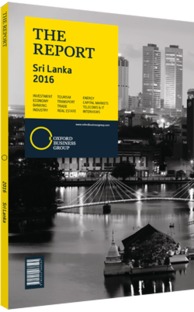Ranjit Fernando, Chairman, Urban Development Authority: Interview

Interview: Ranjit Fernando
What do you see as the most viable solutions to integrated transport in Colombo?
RANJIT FERNANDO: The only answer is mass transport. It is not enough to expand the roads alone. These are essential, but the middle class is growing and buying vehicles. September 2015 alone brought around 23,000 new vehicles to the country. This is a result of public transport being so poor.
This needs to be looked at in three tiers. The first tier is the seven corridors going into the city from the fringe. Each of these corridors needs to be fed by some kind of mass transit system, either bus or rail. Second, for the journey between a person’s doorstep to the transport node, you are likely to need a bus. Third, to get around the city, some kind of inner-city loop is required, which could be a mass rapid transit system or a monorail. All three tiers involve different technologies. It can’t be one single mode, but rather a systematic approach, and the challenge is to have one institution in charge of all three nodes in order to synchronise, coordinate and price accordingly, and then to link all of that to land use.
Beyond this, there is a major social challenge. There are about 8000 buses in Colombo. The studies indicate we only need around 4000 to run efficiently, and if we introduce a real mass transit system that number is likely to reduce further. The government will need to be involved in redeploying and retraining those 4000 bus owners who are no longer needed. We do not have big bus companies, but rather small and medium-sized enterprises, where one guy owns a few buses. It is very fragmented and the lobby group for those businesses is very strong.
What strategies are being employed to improve middle-income housing?
FERNANDO: On the housing finance side, the problem is that while there are 20-plus banks, most of them deal with short-term funds because their income is primarily from deposits. A bank does not want a huge mismatch between funding and lending, but housing inherently requires longer-term lending. Regarding the long-term funding available, it is a shame that of the money generated from the Employee Providence Fund, the Employee Trust Fund and pension funds at least 90% is in Treasury bills and government bonds. They are simply being used to balance the budget. So the tenor of these loans is being reconverted into short term when some of it should come into the banking sector to incentivise them to lend.
Apart from intervention in financial markets, we can also intervene in land markets. It is important to highlight our shift away from the government simply undertaking projects themselves. The programme now is for the government to stimulate the market to build, releasing land and giving incentives for development, including tax breaks and infrastructure provision. A price ceiling keeps things affordable for the middle class. The idea is also to make it easier and more profitable to build on transit corridors, so we are looking at liberalising land-use regulations within a certain radius from railway stations, allowing you to build more per square metre. We expect more land to be released through this process.
How does urbanisation in Sri Lanka compare with other countries in the region?
FERNANDO: Various agencies measure urbanisation in different ways, but from looking at the World Bank’s recent surveys, the consensus is that Sri Lanka sits at around 48%, which makes us more or less as urban as other countries in the region.
The issue we have traditionally faced is an anomaly in the statistics, which often cites our urbanisation rate as standing at 18%. The way we capture urbanisation in our census is defined at the urban and municipal councils. When we designate urban, we do not look at population density in significant areas.
You have reached the limit of premium articles you can view for free.
Choose from the options below to purchase print or digital editions of our Reports. You can also purchase a website subscription giving you unlimited access to all of our Reports online for 12 months.
If you have already purchased this Report or have a website subscription, please login to continue.

